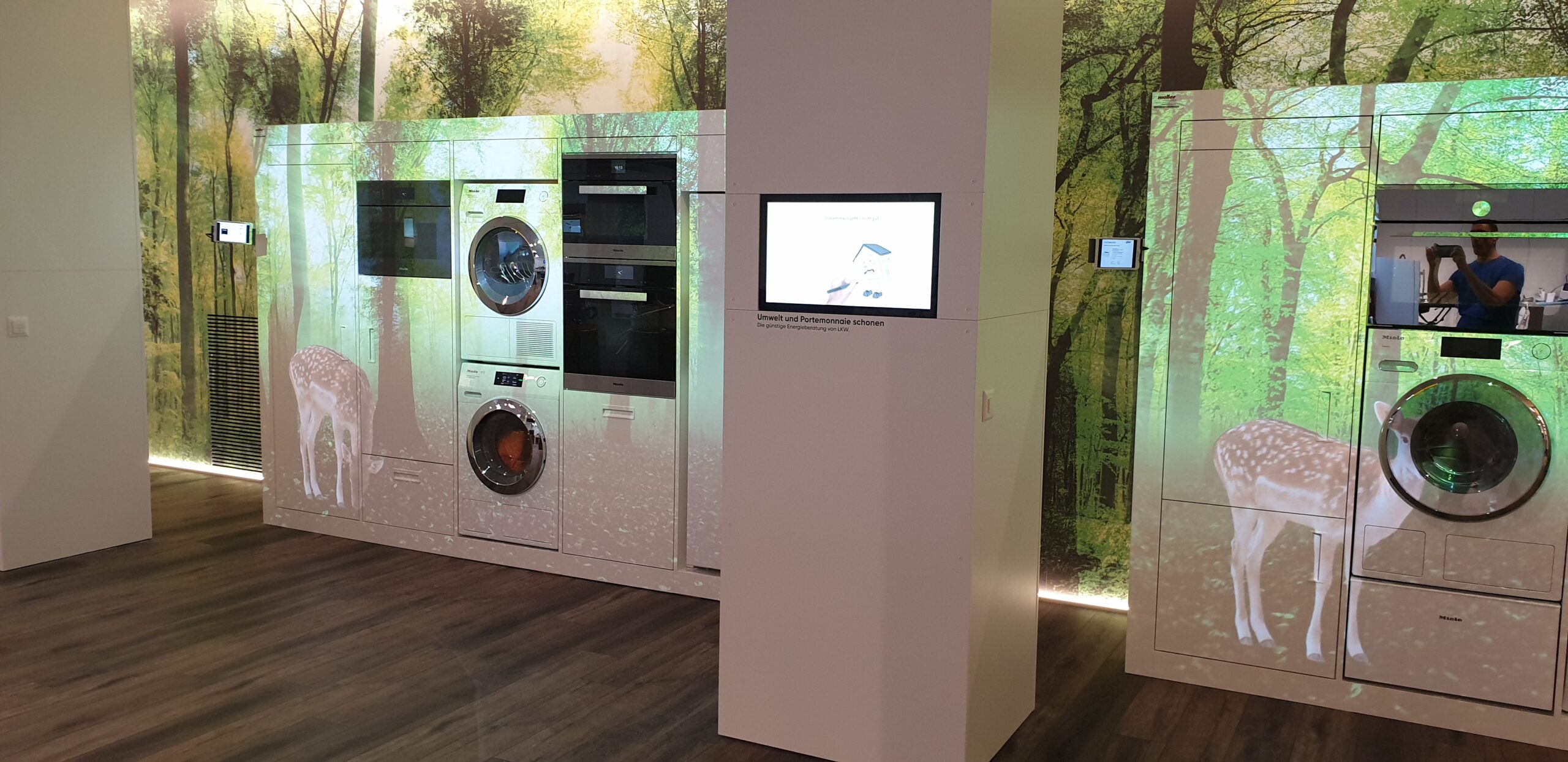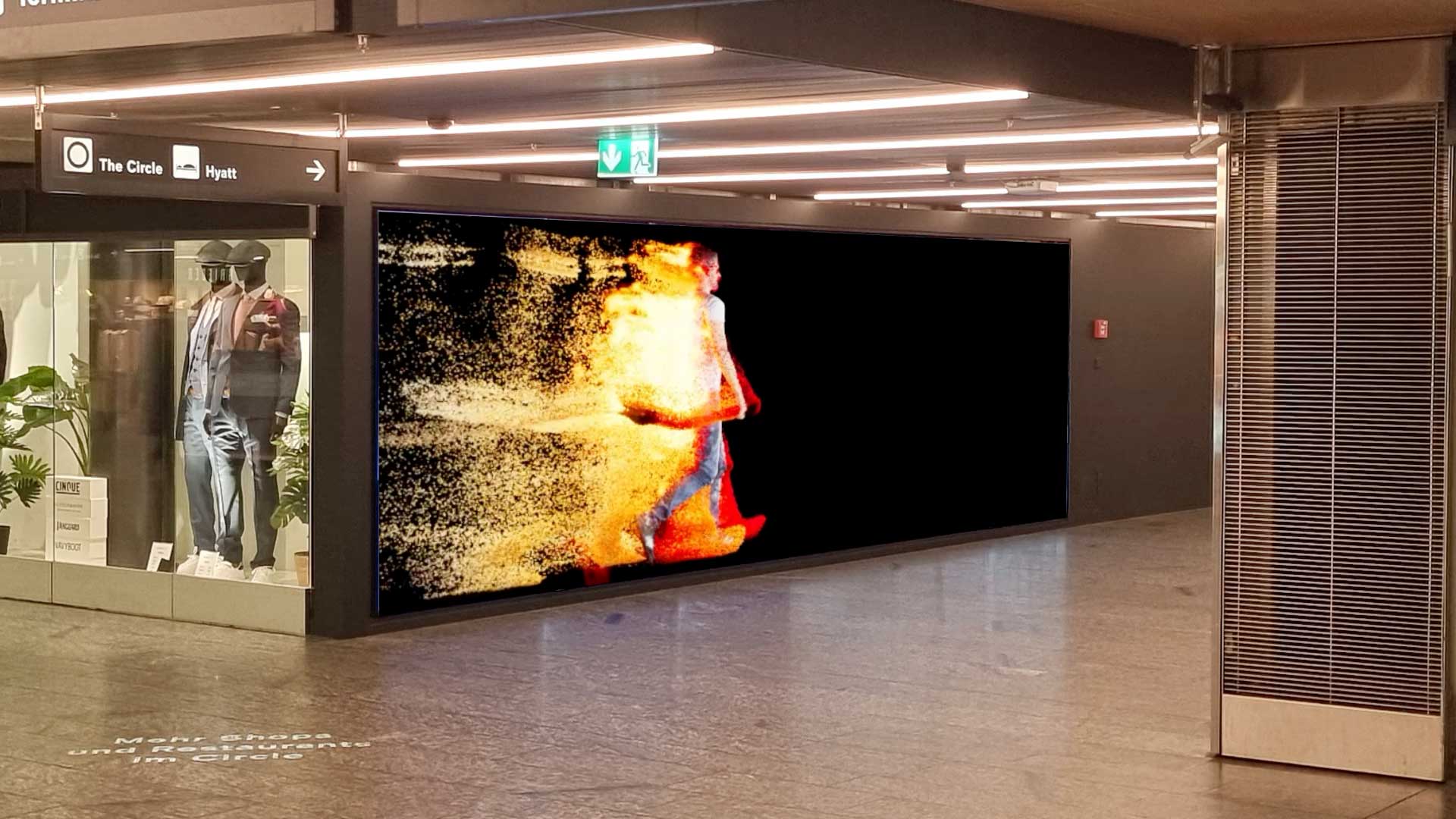Videowall - what you need to know
We deliver content, not hardware*. The image quality will depend on your video hardware and will be adapted accordingly, as well as the format. The length of the film can be adapted to your needs, generally it is a loop which allows a soft transition from the end to the beginning of the film. It is possible to subscribe to receive new visuals in order not to bore the viewer who comes back regularly.
* The Dynamics of Videowall Technology: Beamer vs. LED Display
In the ever-evolving landscape of visual technology, videowalls have emerged as powerful tools for communication, entertainment, and information dissemination. Two prominent technologies that dominate this space are projectors (commonly known as beamers) and LED displays. Each technology presents distinct advantages and disadvantages, catering to diverse needs and applications in the world of visuals.

Beamer (Projector) Technology:
Advantages:
- Scalability: Projectors excel in creating large-scale visuals, making them ideal for expansive environments such as auditoriums, lecture halls, and theaters. They can easily project images or videos onto sizable screens or surfaces.
- Cost-Effectiveness: In terms of cost per square inch, projectors often provide a more budget-friendly solution for larger displays. This makes them a preferred choice for organizations with a focus on maximizing visual impact within financial constraints.
- Portability: Projectors are relatively portable compared to large LED displays. This makes them suitable for temporary installations or events where flexibility and mobility are key considerations.
Disadvantages:
- Limited Brightness: In well-lit environments, projectors may struggle to maintain optimal brightness, leading to diminished image quality. Ambient light can significantly affect the visibility of projected content.
- Maintenance Needs: Projectors have lamps that require periodic replacement, and their overall lifespan can be shorter compared to LED displays. This introduces maintenance costs and potential downtime.

LED Display Technology:
Advantages:
- Brightness and Contrast: LED displays offer high brightness levels and excellent contrast ratios, ensuring vivid and clear visuals even in well-lit spaces. This makes them suitable for environments with varying lighting conditions.
- Longevity and Reliability: LED displays have a longer lifespan compared to projector lamps. They are durable and require minimal maintenance, making them a reliable choice for continuous operation.
- Flexible Configurations: LED displays are versatile and can be arranged in various configurations, adapting to unique architectural or spatial constraints. They are modular and can be seamlessly tiled to create large, seamless video walls.
Disadvantages:
- Cost: LED displays generally come with a higher initial cost compared to projectors. The investment required for a comprehensive LED videowall setup may be a limiting factor for some budgets.
- Fixed Installation: While LED displays offer flexibility in terms of configurations, they are often designed for permanent or semi-permanent installations. This can be a drawback for those seeking a more flexible, portable solution.
In conclusion, the choice between beamer and LED display technology hinges on the specific requirements of the application, budget considerations, and the intended environment. Beamer technology is cost-effective for large-scale projections in controlled lighting conditions, while LED displays shine in environments that demand high brightness, durability, and flexible configurations, albeit at a higher initial cost. Ultimately, the decision should align with the unique needs and goals of the user or organization employing videowall technology.
Back to "content for videowall"